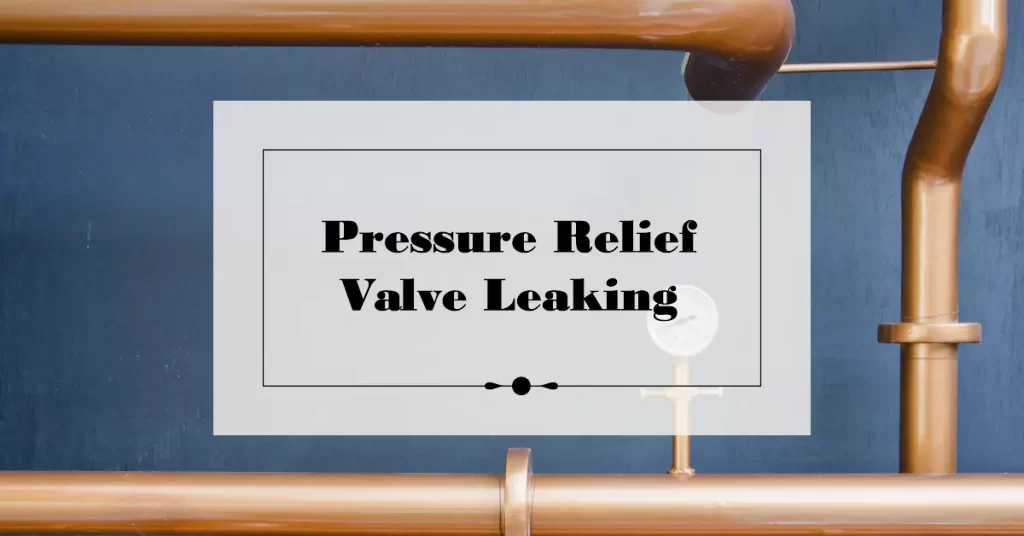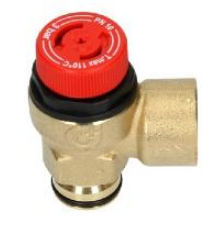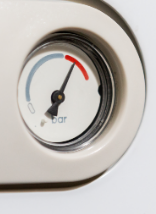If you’re experiencing a leaking boiler pressure relief valve, you’re not alone. This issue can occur due to various reasons, but fret not, as we are here to provide you with step-by-step instructions to resolve this problem efficiently. Before we delve into the solutions, let’s understand the importance of the pressure relief valve and why it may leak.

Understanding the Boiler Pressure Relief Valve
The boiler pressure relief valve is a crucial safety component in your heating system. Its primary function is to release excess pressure that builds up inside the boiler. If the pressure inside the boiler exceeds safe levels, the pressure relief valve prevents potential disasters by venting the excess pressure outside.
A pressure relief valve (prv), also called a safety relief valve, is one of the most important types of safety valves. This type of valve sets a limit on the rise of pressure in a boiler. In normal operation, the valve is closed and no water passes through.
But if the pressure in the system exceeds the limit – normally 3 bar, the valve opens to relieve the pressure. It sends system water into the overflow pipe outside until pressure has gone down. This protects the expensive parts of the boiler from damage due to high pressure.

Without a relief valve, the pressure can continue to grow until another component fails in the boiler and pressure is released. You can find a prv anywhere on a system but with a combi, it’s mostly inside the casing.
Why a faulty pressure relief valve is a boiler part that can fail and lead to expensive repairs
Possible Causes of a Leaking Boiler Pressure Relief Valve
Before attempting any fixes, it’s essential to identify the root cause of the leak. Here are some common reasons for a leaking pressure relief valve: One primary concern is excessive pressure, where the built-up pressure might lead to the release of pressure through a leaking relief valve. Additionally, faulty pressure relief valves, which can deteriorate over time, can also contribute to leaks. The presence of sediment and debris within the valve is another source of leakage, emphasizing the importance of consistent maintenance. Moreover, extreme temperature fluctuations can compromise the valve’s efficiency, potentially causing leaks to occur.
- Excessive Pressure: If the pressure in your boiler is too high, the relief valve may leak to release the built-up pressure.
- Faulty Pressure Relief Valve: Over time, pressure relief valves can wear out or malfunction, leading to leaks.
- Sediment Build-up: Sediment and debris inside the valve can cause it to leak. Regular maintenance can prevent this issue.
- Temperature Issues: Extreme temperature fluctuations can impact the valve’s effectiveness, causing it to leak.
Why does a PRV leak outside?
When working correctly, the prv should not leak. Pressure relief valves are connected to an outlet pipe outside. If the prv leaks constantly and the pressure in the boiler drops regularly, this normally means the valve is not fully closing.
This is most likely due to dirt and debris stopping it from sealing closed after it has opened up. If the valve is more than 5 years old, it can also become faulty from wear and tear.
PRV’s are almost always inside the a combi boiler casing and a gas engineer will need to investigate. If the cause of the leak is debris on the seal, a simple clean will get it working again. PRV’s are not an expensive part to buy if it does need replacing.

Step-by-Step Guide to Fixing the Leaking Pressure Relief Valve
Follow these comprehensive steps to fix the leaking boiler pressure relief valve. In many cases the prv is located inside the main boiler casing so should not be worked on if you are not a qualified gas engineer.
Step 1: Turn Off the Boiler
For safety reasons, the first step is to turn off the boiler and allow it to cool down. Locate the main power switch and shut off the boiler’s electricity supply.
Step 2: Turn Off the Water Supply
Next, turn off the water supply to the boiler. This step ensures no additional water enters the system while you work on fixing the issue.
Step 3: Drain the Boiler
To relieve any remaining pressure and water from the system, locate the boiler’s drain valve and attach a hose to it. Carefully drain the water into a suitable container until the boiler is empty.
Step 4: Inspect the Valve
Thoroughly inspect the pressure relief valve for any signs of damage, corrosion, or debris. If you notice significant damage, it’s best to replace the valve with a new one.
Step 5: Clean the Valve
If sediment or debris is present, gently clean the pressure relief valve using a soft brush and mild cleaning solution. Ensure that the valve is free from any obstructions that may cause leaks.
Step 6: Check the Expansion Tank
Inspect the expansion tank connected to the boiler. A faulty expansion tank can lead to pressure imbalances, causing the relief valve to leak. If needed, consult a professional to service or replace the expansion tank.
Step 7: Adjust the Water Pressure
Using a pressure gauge, check the boiler’s water pressure. If it’s too high, follow the manufacturer’s guidelines to adjust it to the recommended level.
Step 8: Test the Valve
Once you’ve completed the previous steps, reassemble the boiler, and turn on the water supply. Restart the boiler and observe the pressure relief valve for any signs of leaks. If the issue persists, consider seeking professional assistance.
Early warning signs like a leaking pressure relief valve that indicate your boiler may fail
Pressure relief valve leaking after replacement
If the PRV is leaking after replacement, it may be working normally by releasing extra pressure that has built up in the system. It is a safety device and a brand new component is unlikely to be faulty. Before looking to replace it again, look for pressure issues in the system. Call out an engineer to find and fix any defects.
If you are looking for quality service, Hometree is well worth a look. It covers all aspects of home care including your boiler. Click here to see why they are recommended.
PRV leaking after testing
It is important that the prv is tested during a boiler service, especially if there has been no need to repressurise the system in the last 12 months. If the prv leaks after a test, you may need to replace it if there are no other issues with the boiler.
When a test is carried out, problems further down the line may be spotted early and rectified before a boiler breakdown occurs.
A leaking boiler and where to check for water leaks from the pressure relief valve
Pressure relief valve leaking from threads
If the prv is leaking and you can see corrosion on the threads, the whole component will need to be replaced. It is not a good idea to try to fix rust or another defect on the prv or seal it another way. PRV’s are a relatively inexpensive part that can be exchanged quickly.
Troubleshooting a boiler that is not working properly due to a faulty pressure relief valve
New prv keeps opening
A boiler prv that keeps going off and there is water discharge indicates some sort of boiler problem. Apart from a faulty prv itself with dirt, sludge or seating of the valve, it can also indicate a faulty pressure gauge, expansion vessel out of charge or excessive pressure in the system.
What causes too much pressure in a boiler?

High pressure in a boiler and central heating is usually caused by either having too much water in the system by overfilling it or leaving the filling valves on; or there is not enough air in the expansion vessel. Too much pressure can lead to symptoms such as an increased risk of leaks. You can relieve some of the pressure by bleeding the radiators in your home.
The expansion vessel can become faulty when the rubber membrane perforates inside and allows water into the area for air. Some of the symptoms you will notice with a failed expansion vessel are high or rising pressure in the system, water coming out of the prv and leaks on some of the joints in pipes.
Conclusion
In conclusion, a leaking boiler pressure relief valve can be a bothersome issue, but with our comprehensive guide, you now have the knowledge to address it effectively. Regular maintenance, proper inspection, and necessary adjustments can go a long way in preventing such problems. Remember, if you are unsure or uncomfortable performing these steps, it’s always best to consult a qualified gas professional to handle the repairs.
